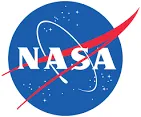
We live in an age of big data, where scientists have collected such a vast amount of information that they simply don’t have the manpower or resources to process it. However, with the rise of decentralised computing and the ever-increasing opportunities for interconnectedness provided by the Internet, we now all have the power to help out. Regardless of how much time or effort you are able to contribute (from weeks to just a couple of minutes!) there is a way to get involved. Why let the lab coats have all the fun?
1. BOINC - Forget mining, harness your computer's down time for the Good of Science!

BOINC is a really nifty bit of software that allows researchers to tap into the unused processing power of computers all over the world. These guys have been doing this for years, way before the concept of decentralised computing or mining was well known.
When you sign up you will join a network of over half a million computers, all donating their spare CPU and GPU power to analyse various data sets and support scientific projects. BOINC is the ideal citizen science project for those who have very little time to spare, as once you’ve completed the initial set up it will run in the background on your computer whenever it is idle, with very little human input required.
The setup is easy. First download BOINC, then choose your projects. I’ve listed a few of my favourites below if you need a little inspiration:
Would you like to be the first to discover alien life? The goal of SETI@home (Search for Extraterrestrial Intelligence) is to detect intelligent life out there in the depths of space. Radio telescopes are used to listen for narrow-bandwidth radio signals from space. These signals do not occur naturally, so any detection would provide evidence of extraterrestrial technology. However, there is an almost limitless supply of data from this project, and so more computing power allows the SETI team to cover greater frequency ranges with higher sensitivity. In the event that your computer is one of those who identifies the first signal from the stars, you will receive co-credit for the most important discovery in the history of mankind. Oh, and if that wasn’t enough then it has a really retro Sci-Fi screensaver that makes you feel as if you’re in the cast of Contact.
Would you like to support research that may ultimately lead to finding cures for diseases? The goal of the Rosetta@home project is to predict the shapes in which proteins will fold up. Eventually this should help scientists to design new proteins to fight diseases such as HIV, Malaria, Cancer and Alzheimer’s. Rosetta also has a screensaver that visualises the folding in action - it beats 3D pipes any day.
Would you like to help discover new fundamental particles? CERN’s Large Hadron Collider is huge, and the volume of data it needs to process is similarly enormous. LHC@home has five projects running currently for you to choose from, including processing actual collision data from their particle accelerator and creating virtual simulations of collisions to compare to their real-life counterparts.
2. Zooniverse
 Zooniverse
ZooniverseZooniverse is a huge catalogue of the largest and most popular online science projects, bringing together a community of nearly 1.5 million citizen scientists. Encompassing topics across the spectrum of cosmology, climate, nature, humanities, biology and physics - there is bound to be something that grabs you. All of these projects have comprehensive instructions and are designed in such a way that you will learn more about the science behind what you are doing, and give you a real sense of having contributed to the research.
Planet Hunters - Discover exoplanets by analysing Kepler data, by searching for the characteristic drop in light levels as planets transit in front of their parent stars.
Radio Galaxy Zoo - Discover supermassive black holes by searching for the jets of material that burst away from them at nearly the speed of light.
Penguin Watch - Spy on Penguins for Science! Help to classify nearly 1.5 million images from Antarctica and the Southern Ocean, by clicking on every penguin you see! This one is quite therapeutic and surprisingly addictive.
3. Scistarter

What about playing video games for science? Scistarter is a website that indexes various citizen science projects across the web, but what makes it unique is its offering of online games. Why waste time playing Candy Crush when you could be helping scientists understand the brain, align DNA sequences or cure cancer? Here are a couple of my favourites:
EyeWire is a game designed by MIT to help scientists map the neural connections in the retina. By tracing tree-like shapes of neurons, you can help to develop 3-D reconstructions of neurons - research that will eventually lead to software that can detect brain abnormalities related to disorders like autism and schizophrenia. It’s really relaxing - finally, an excuse for grown ups to do some colouring in!
Phylo is a game in which you align sequences of DNA by ordering coloured blocks into the most efficient arrangement. Phylo is designed to allow humans (who are still unmatched when it comes to pattern recognition) to optimise the decisions made by algorithms, to ensure the most efficient solution.
4. Stardust@home

In 2006, the Stardust spacecraft’s sample capsule returned to Earth, containing precious particles of interstellar dust which originated in distant stars many light years away. These are the first ever interstellar particles to be collected by mankind, but the problem is, before they can be studied they have to be found! These particles are a millionth of a metre in size and so far only a few have been located. To find these elusive specks of dust, the Stardust team are recruiting teams of volunteers to sift through millions of images using a virtual microscope. You need to complete a web-based training session and pass a test to qualify and participate. Anyone who helps to find a particle will appear as a co-author in the scientific paper announcing its discovery, and you will also get to name the particle!
5. NASA Image Detective

Do you want to spend a while gazing at the view from the International Space Station? NASA’s Image Detective allows you to do just that, whilst helping to analyse thousands of images by linking them to their locations on planet Earth and tagging the features in each image. Although their website is in need of a bit of revamp, the imagery the ISS is capturing is gorgeous. They are still requesting help, so there are evidently many more images left to classify.
Thanks for reading
I will continue to publish similar content in the upcoming weeks, so be sure to follow if you'd like more posts about philosophy, cosmology and consciousness. This post was also published on Medium, and any future content I create will be posted on both platforms. If you want to follow me elsewhere you can find me at:
Twitter - @ongoingwow
Medium - @ongoingwow
Instagram - @ongoingwow